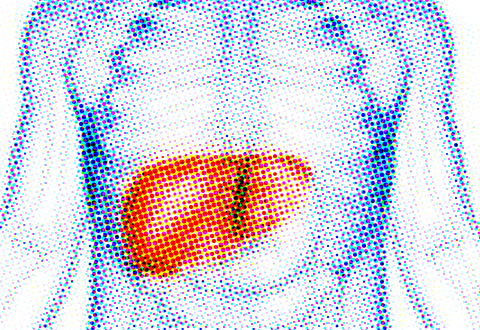What you need to know about hep B | part 4

This article – part 4 of 8 – was written by Dr Alice Lee , Gastroenterologist and Hepatologist, Concord Repatriation General Hospital.
—
Liver cancer | part 1
One of the most serious complications of hepatitis B is the development of liver cancer. All people with chronic hepatitis B infection are potentially at risk of developing liver cancer. Even so, some are at higher risks than others. There are screening protocols for those at high risk, regardless everyone with hepatitis B should be considered for screening.
The primary cause of liver cancer is hepatitis B, not alcohol
High risk hepatitis B groups for increased risk of liver cancer are anyone with cirrhosis, a family history of liver cancer, and older people (men over 40 years and women over 50 years). However, people outside of this group can still develop liver cancers and they require close monitoring. As discussed previously, all people with hepatitis B require lifelong monitoring for both the liver condition and for consideration of liver cancer screening.
There are different types of cancers that can affect the liver. Primary liver cancers are cancers that develop in the liver cells – known as “hepatocytes”. Other types of liver cells such as bile duct cells can also lead to cancer, but this is not directly related to hepatitis B. Cancers from other sites can also spread to the liver so that liver cancers can be secondary to cancers that have started elsewhere. This article will discuss the primary type, which is refered to as liver cancer or hepatocellular cancer.
Liver cancer is one of the most common cancers in the world
Primary liver cancer is one of the most common cancers in the world – ranking fifth – and is the second leading cause of cancer related deaths in the world. It is one of the cancers that is continuing to increase in number. Apart from hepatitis B, there are other conditions that can increase the chance of developing liver cancer. This includes cirrhosis from any cause. This could include alcohol, fatty liver, hepatitis C, autoimmune liver disease, iron storage disease as well as metabolic conditions. Cirrhosis is a condition of severe liver scarring that covers a wide spectrum of symptoms, and so some patients may not realise that they have cirrhosis until they are very sick. It can sometimes be picked up early by blood tests as well as some imaging studies. Anyone with ongoing abnormal liver tests should ask their doctor about how their liver is doing.
It’s not easy to find liver cancer – multiple tests are needed
Screening for liver cancer is recommended in groups of patients at increased risk. This is done using a liver ultrasound and, in some cases, a tumour marker blood test – an alpha fetoprotein (AFP) – every six months. Since liver inflammation, cirrhosis and non-related liver diseases such as pregnancy and testicular cancer can cause an elevated AFP, there is ongoing research to try and find an accurate and simple blood test to identify liver cancer early.
Liver ultrasound is simple and safe as there is no radiation exposure. Preparation for the procedure requires fasting. As with all tests, there are limitations. It relies on the skills of the sonographer, the patient’s body build/physique and fasting state. Patients are asked to fast because the bowel can get in the way and overlying gas can limit the views of the liver. In very large patients with fatty liver, the fat in the liver can make visualization difficult so that small liver lesions may not be found. Other liver conditions such as liver cirrhosis and the presence of many cysts can also interfere with getting good visualisation.
Liver cancer is more dangerous without symptoms
In a liver ultrasound, doctors are looking to find new, very small liver spots – often less than 1 cm across. Screening with an ultrasound is usually just a lead-in to other tests that will clarify the nature of any new liver spot. Not all new lesions are cancer, but all new liver lesions in people with underlying risk factor for liver cancer need further close scrutiny.
| Next: In Part 5, to be published next week, Dr Lee will write more about liver cancer. |






